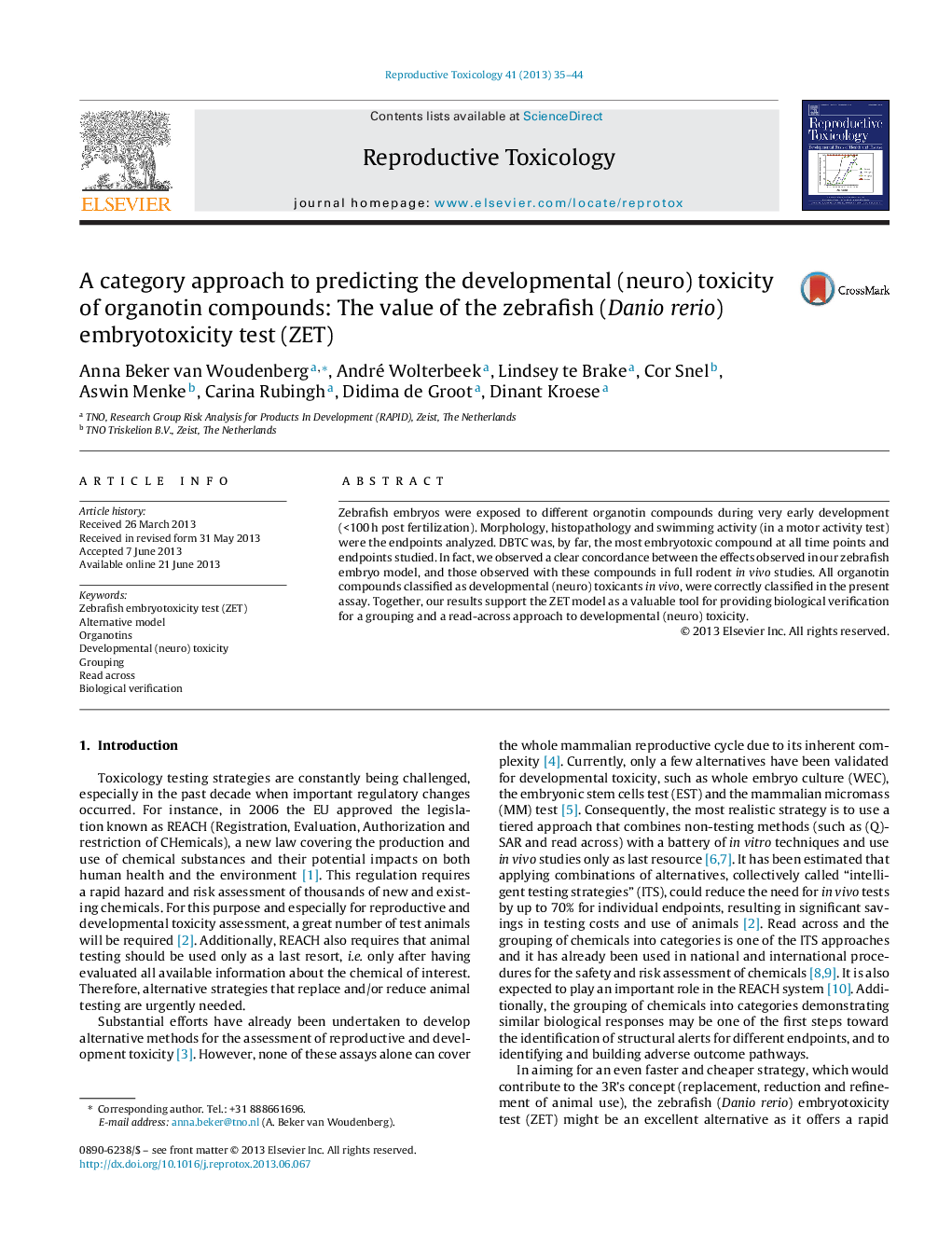| Article ID | Journal | Published Year | Pages | File Type |
|---|---|---|---|---|
| 5858766 | Reproductive Toxicology | 2013 | 10 Pages |
Abstract
Zebrafish embryos were exposed to different organotin compounds during very early development (<100Â h post fertilization). Morphology, histopathology and swimming activity (in a motor activity test) were the endpoints analyzed. DBTC was, by far, the most embryotoxic compound at all time points and endpoints studied. In fact, we observed a clear concordance between the effects observed in our zebrafish embryo model, and those observed with these compounds in full rodent in vivo studies. All organotin compounds classified as developmental (neuro) toxicants in vivo, were correctly classified in the present assay. Together, our results support the ZET model as a valuable tool for providing biological verification for a grouping and a read-across approach to developmental (neuro) toxicity.
Related Topics
Life Sciences
Environmental Science
Health, Toxicology and Mutagenesis
Authors
Anna Beker van Woudenberg, André Wolterbeek, Lindsey te Brake, Cor Snel, Aswin Menke, Carina Rubingh, Didima de Groot, Dinant Kroese,
